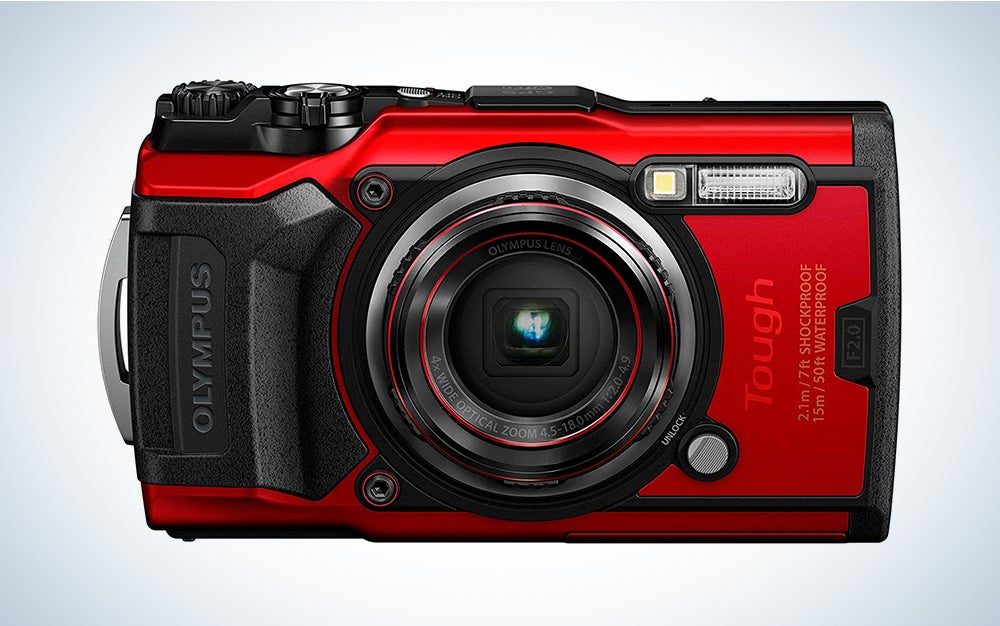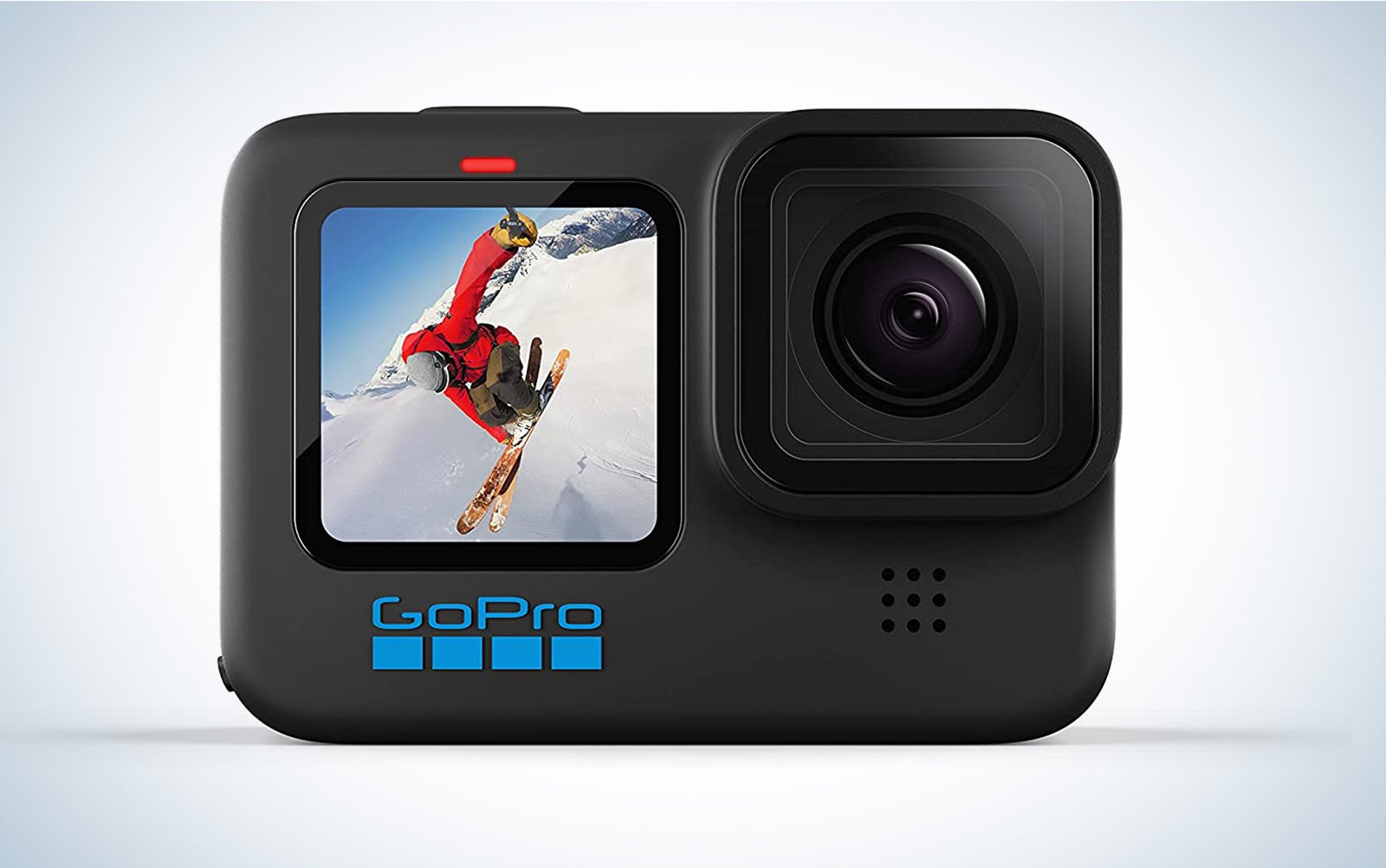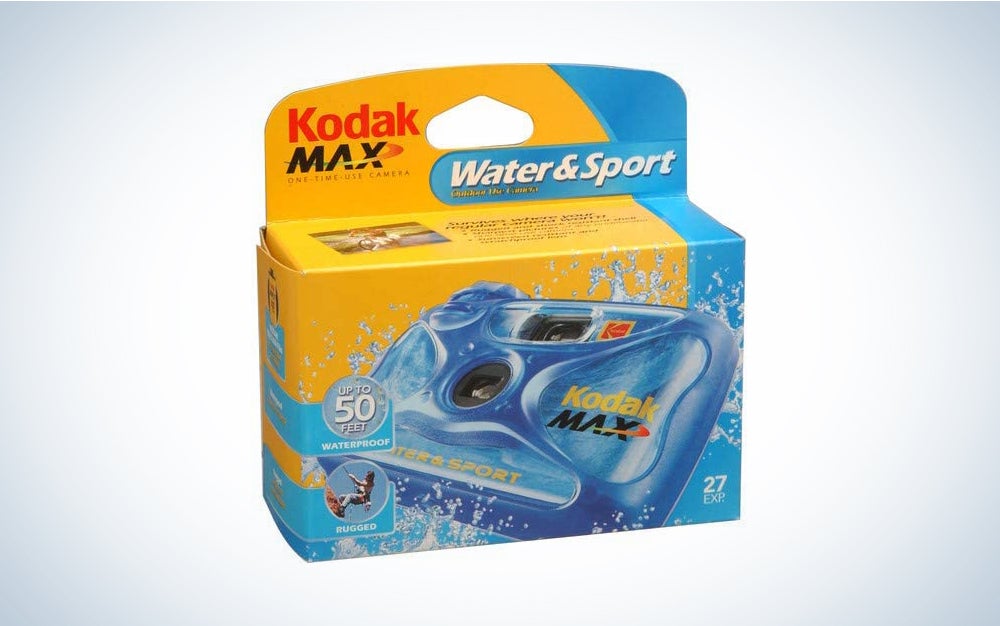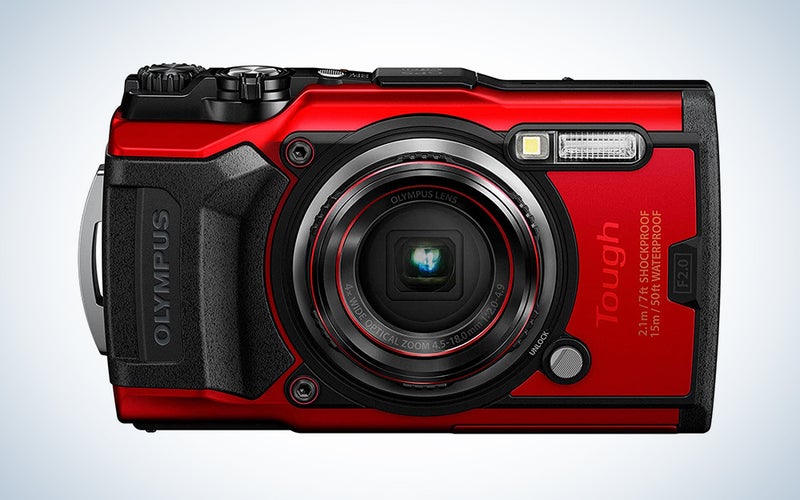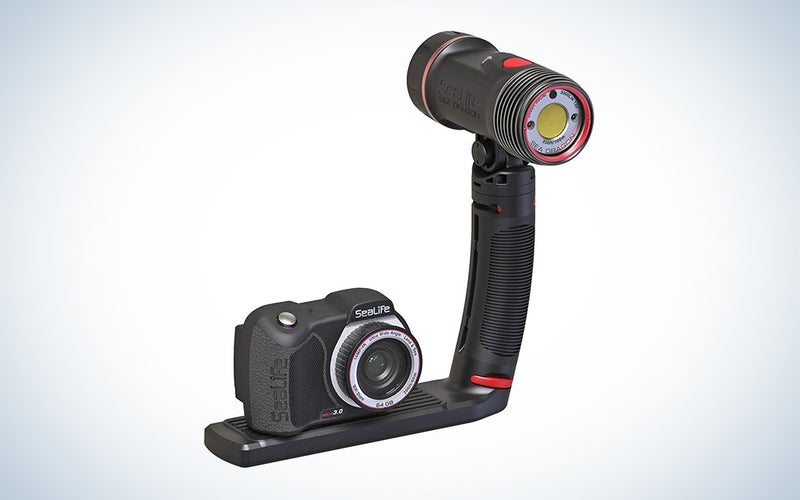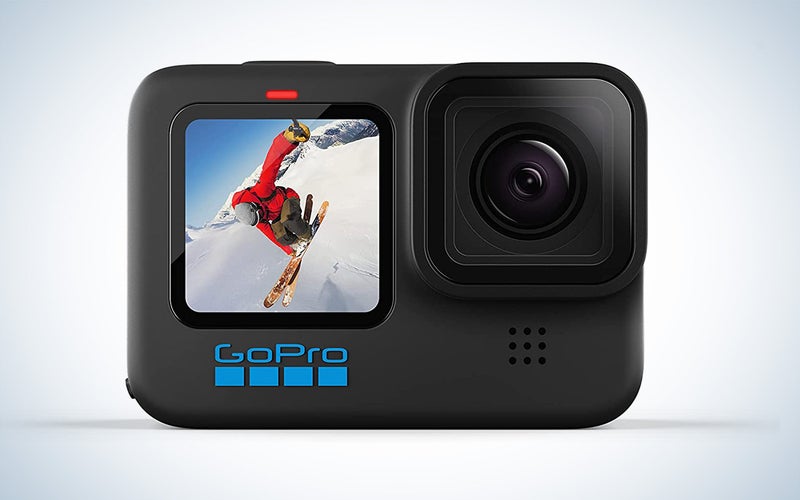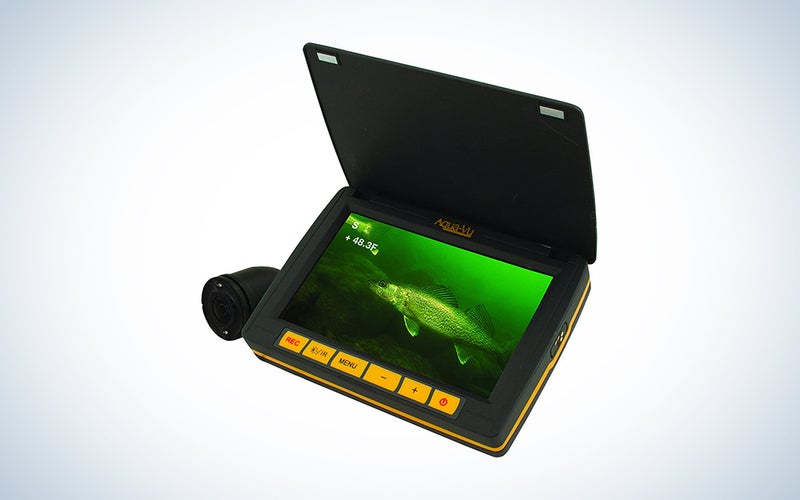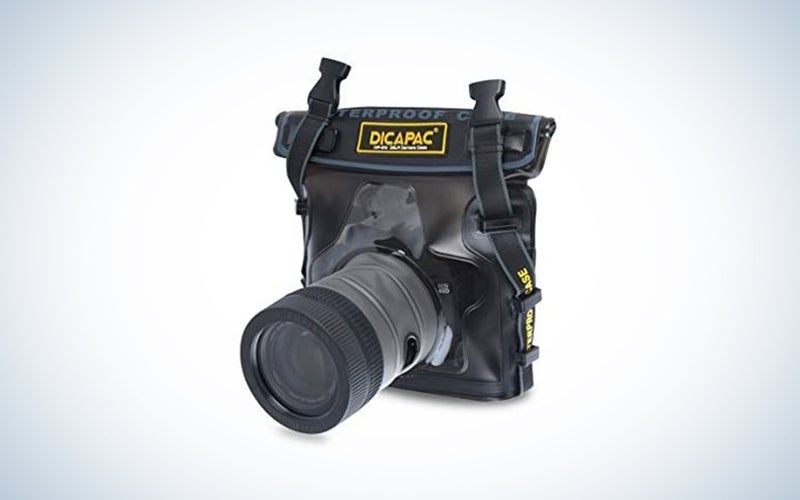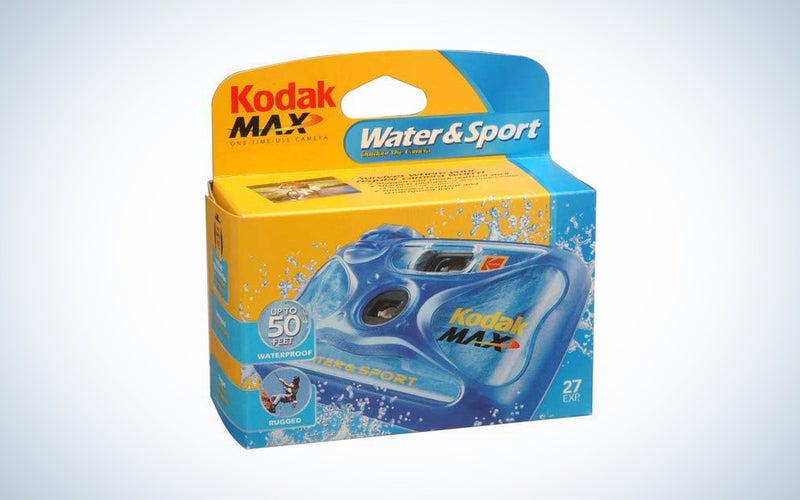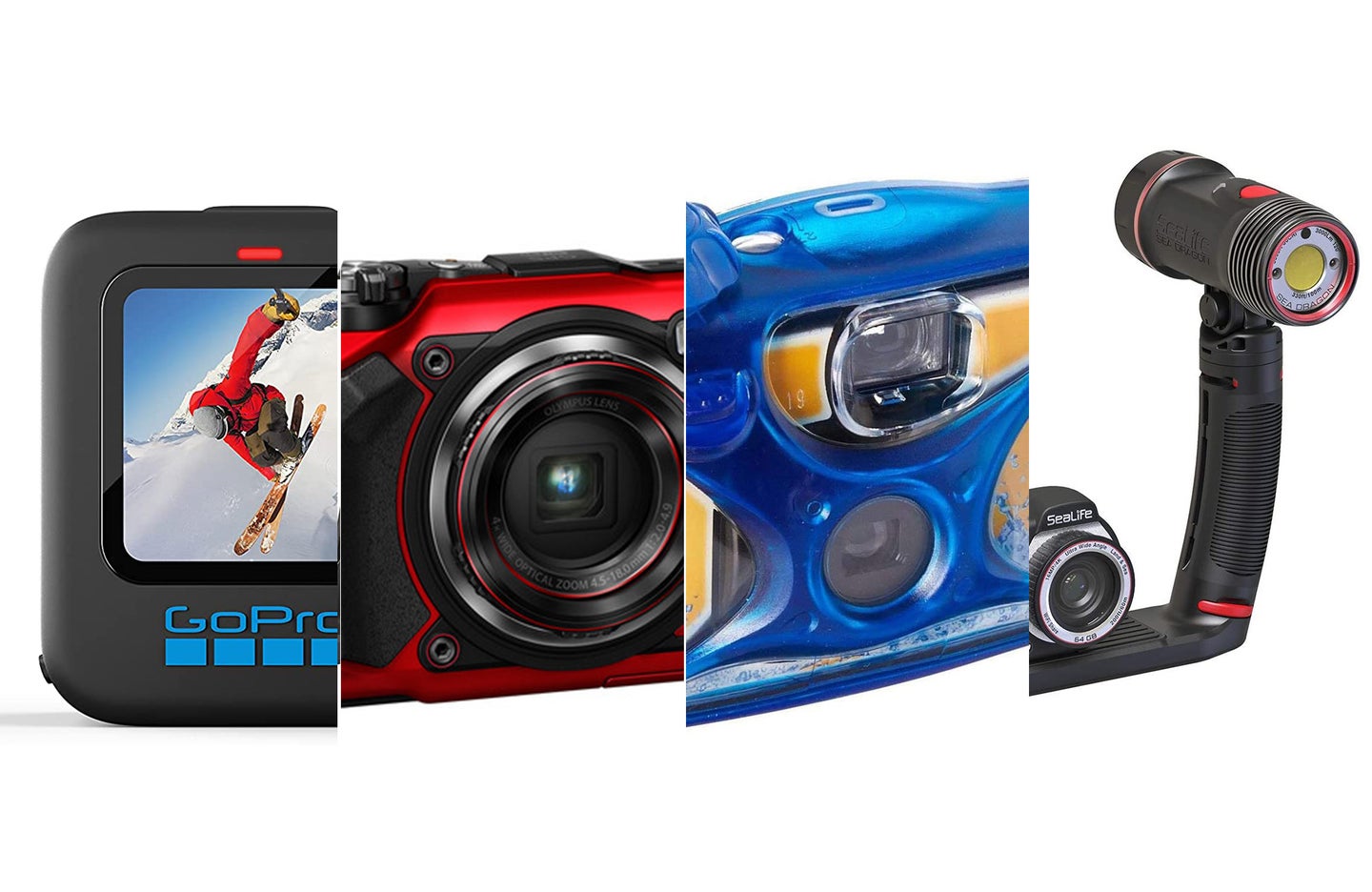
Most cameras can’t go underwater. Even your smartphone camera isn’t built to shoot while fully submerged. If you’re looking to capture some content from below the water’s surface, however, you have plenty of options to choose from. We’ve curated this list of the best underwater cameras to take with you next time you want to shoot photos or videos in the depths. You can find solid options priced anywhere from twenty bucks for a disposable, to a couple of hundred dollars. We’ve got you covered whether you need an underwater fishing camera, a waterproof DSLR, or just a solid action camera that you won’t have to worry about if you end up taking it to the beach this summer.
All you need to think about is specifically what you plan on doing with your camera. What intense conditions might it face? What kind of footage are you hoping to create? After looking at these things to consider, it should be easy for you to assess which tool on the market is the best underwater camera for you.
- Best overall: Olympus Tough TG-6
- Best underwater camera for deep diving: SeaLife Micro 3.0
- Best underwater camera for video: GoPro Hero10 Black
- Best underwater fishing camera: Aqua-Vu AV Micro 5.0
- Best waterproof housing for the camera you already own: DiCAPac WP-S10 Pro DSLR Waterproof Case
- Best cheap underwater camera: Kodak Weekend Underwater Disposable Camera
How we picked the best underwater cameras
The writers and editors at PopPhoto.com have decades of photographic experience among them, most of which has been on dry land, but some of which has happened underwater. For this story, we relied on a mixture of hands-on experience, user feedback, editorial reviews, and spec comparisons to find the most reliable and high-performing models. We sought to find a balance of features and budget that would fit most people’s needs. We also used this story as an excuse to go to the beach while work was paying us.
How to find the best underwater camera for all your photography needs
Before you go and make a purchase, you have some essential variables to consider to make sure that you’re spending your money wisely. Buy the wrong option and you could end up missing the shot and destroying your gear. That’s a bad day at the beach.
Things to consider when shopping for the best underwater camera
Everyone’s underwater camera needs are different. You’re not going to want to buy the same camera for ice fishing as would for snorkeling. They’re entirely different activities with their own specific underwater photography challenges. So let’s start by thinking broadly.If you don’t have specific underwater needs, but you’re looking to shoot more casually, you can look for an underwater camera the same way you would look for a typical model. In addition to water-resistance, you’ll want to make sure your camera has enough resolution and a good imaging sensor that can handle tough lighting situations. If the lens is attached, you’ll likely want the flexibility of a zoom. Her are some specific things to consider.
Depth
The key issues that arise as you plan deeper adventures are depth rating, functionality, and lighting. If you plan on staying closer to the surface level of the water, these factors may not be as big of a concern for you. Deep divers will want the best digital camera that can not only seal out unwanted moisture, but also withstand the intense pressure from the water above. That means that the deeper you’re going, the sturdier your underwater camera will need to be. As you peruse products, a “depth rating” will tell you exactly how deep each camera will be able to go. If you’re going especially deep, the best underwater camera for you is going to be one with a higher number. Most deep dives will have you going anywhere from 18 to 30 meters deep, so you’ll want to make sure your camera can handle the pressure for about 100′ of the water above’s weight.
Design
You’ll also want to consider functionality. Think about how much clumsier basic tasks feel under water, and think about how many tiny buttons are on the DSLR you have at home. Even if you’re looking for a professional camera, you’ll likely want a model that has simpler functionality so you don’t miss any shots due to messed up settings.
Lighting
Most importantly, a concern you will not want to overlook is lighting. If you plan on using your camera mostly near or above the surface of the water, lighting won’t be a huge issue for you during the day. However, as you dive away from the sunlit surface, you’ll continue to lose light, and taking pictures will become more and more difficult. You’ll want a camera that can provide you with continuous lighting — not flash; this is to avoid potentially disturbing any sealife you might be hoping to capture.
Video specs
If you’re looking for the best underwater camera for video, you should know that your stellar photography camera might let you down as soon as you hit record. If you do plan on shooting video, you’ll want to make sure you have solid image quality, and some stabilization.
Firstly, you’ll want to make sure that your camera’s resolution for video is high enough to enjoy your footage wherever you’ll be viewing it later. This is probably going to be on your phone, computer screen, or maybe even a large home TV. Although you may love another camera for it’s photography, many cameras will downgrade their imaging features as soon as they flip to video mode. So you’ll want to make sure the video you receive is going to be high resolution. When you’re looking at packaging, check for words like “HD video,” “2K,” or “4K.”
And of course resolution isn’t everything—if your camera footage is blurry from shaking and movement, no amount of pixels can help that image look better. Be on the lookout for stabilization features. Usually marked by an acronym including the letters “IS” for “image stabilization”, these features can come in a variety of different forms and names. Optical IS physically moves glass elements inside your lens to counteract the camera’s shaking. Some models offer in-body image stabilization, which moves the sensor instead of the lens elements. Digital IS, in contrast, combats shakiness through an algorithm. Optical IS is preferable to digital IS, however combining the two can lead to excellent results.
Fishing cameras
Fishing cameras can look and function in a very different way to many other products in the underwater camera category. Cameras which are meant to be operated in your hands won’t quite do well here, because you’ll be up on your boat, the ice, or the dock, far away from where you’re actually hoping to capture images. You’re going to want a monitor that stays with you above sea level while your underwater fishing camera plunges down to where the fish are. Here’s what you’ll want to look for: a good quality monitor, a strong cord connecting your camera, and a compact housing. If you’re hoping to save and share the images you’re viewing, be sure to also check that the product is also set up to record.
The monitor needs to be burly against elements like sunlight since you’ll likely be viewing it from outside. What can help here is to find a monitor that is particularly bright, and even perhaps has a physical hood to block the glare of the sun. You’ll also want your monitor to connect to your camera through a cable that is both sturdy and long. If it’s not strong enough, the wiring sending you your image could get damaged, and make it difficult for you to receive a signal from your camera. If it’s not long enough, the camera may not be able to go deep enough to see the fish you’re trying to catch. And if all these features are available in a compact housing, then this tool will be able to fit into your pocket or fishing kit without you having to deal with any extra hassle. Be mindful as you shop, however, that many of these products are designed for simply viewing sealife as you fish. If you’re hoping to record and save the images you’re viewing on your monitor for later, you’ll want to be sure that the product has recording capabilities, and that it either comes with the necessary hardware to do so, or that you’re able to purchase an additional recorder.
Underwater housings
The best camera is often the camera you already own. But don’t dunk your brand new Canon straight into the ocean just yet. On professional sets, you won’t often see waterproof cameras being used. Rather, you’ll see a non-waterproof camera housed in what’s casually referred to as a “lung.” These housings can take any camera you already own, DSLR, mirrorless, film, etc. and instantly turn it into the best underwater camera on the market. Best of all, you don’t have to shell out much extra cash. What you’ll want to look for here is mainly compatibility. Many camera manufacturers will produce underwater housings that fit their specific cameras perfectly, and many more will produce generic housings that fit certain styles or sizes of cameras.
Best overall: Olympus Tough TG-6
Amazon
Why it made the cut: This waterproof compact is also super-tough and built to take abuse.
Specs:
- Megapixels: 12 megapixels
- Depth rating: 50 feet
- Size: 2.6 x 4.4 x 1.3 inches
- Weight: 0.56 lbs
Pros:
- Underwater shooting modes
- Macro mode for close-ups
- No case necessary
- Built-in lights
Cons:
- Small sensor just OK in dim light
The Olympus Tough TG-6 is the best underwater camera that doesn’t clutter up its menus or design with lots of buttons and settings. It can survive depths of 50 feet and temperatures as cold as 14°F. Its built-in lens has a 4x optical zoom, which is about the same as using a 25-100mm zoom lens—for reference, that’s a little wider than your smartphone camera when zoomed out. This camera has many built-in settings so you can do the most without having to know the most; this includes five different settings for underwater shooting alone, so you’ll be sure to get the best possible shot no matter the subject. If you’re a professional or a camera nut, however, this may not be the best option for you. While it’s CMOS sensor can shoot both 4K video and 12MP photos, this is still significantly smaller than the sensors on many DSLRs and mirrorless cameras. This will make it much more difficult of a tool to use if you’re trying to produce cinematic shots with blurry backgrounds. And without interchangeable lenses or fully manual settings, it won’t provide the same level of control as shooting on a professional-grade camera.
Best underwater camera for deep diving: SeaLife Micro 3.0
Amazon
Why it made the cut:
Specs:
- Megapixels: 16 megapixels
- Depth rating: 330 feet
- Size: 4.1 x 10.6 x 17.5 inches
- Weight: 5 pounds
Pros:
- Super-bright built-in light for fighting through darkness
- Works down to 330 feet
- 4K footage from a Sony sensor
Cons:
- Pricey
In addition to the SeaLife Micro 3.0′s impressive watertight seal, this camera can manage depths down to 200 feet, making it the best underwater camera for deep sea expeditions. It has large piano-key like buttons, so even underwater you’ll be able to easily navigate your settings. This professional underwater camera also comes with a large arm, making it easier to operate as well. And at the top of the arm? A wide angle, daylight LED that can provide you with a continuous 3000 lumens of light for a full hour of shooting. However, this camera comes with a price tag that may be too big for the average hobbyist: $999.
Best waterproof video camera: GoPro Hero10 Black
GoPro
Amazon
Why it made the cut: A great all-around camera, it shoots 5K video and works with a host of mounting accessories.
Specs:
- Megapixels: 23 megapixels
- Depth rating: 33 feet
- Size: 2.83 x 1.32 x 2 inches
- Weight: 5.4 ounces
Pros:
- 5K footage
- No case necessary
- Excellent image stabilization
- Easy to operate
Cons:
- Clunky software
When it comes to going underwater to shoot video, it doesn’t get much simpler than the GoPro Hero10 Black. It’s waterproof to 33 feet without any sort of extra case or protection. It has extremely advanced image stabilization built right into it. Plus, it can capture 4K footage at up to 120 fps for super-smooth picture. If you want, you can even shoot at 5K and leave yourself room to crop in on the image later in case you want to really feature that weird fish or cool coral that you saw while under the water. In addition to its waterproof chops, the GoPro can withstand impacts and other possibly catastrophic events. GoPro also makes a host of mounting accessories, including several that float in case you’re worried about dropping your camera in the sea from a boat or the beach.
Best underwater fishing camera: Aqua-Vu AV Micro 5.0
Amazon
Why it made the cut:
Specs:
- Megapixels: n/a
- Depth rating: 60 feet
- Size: 15 x 7 x 8 inches
- Weight: 2.2 pounds
Pros:
- Super-rugged IP67 rated screen
- Long, sturdy cable
- High-resolution image
Cons:
- Finicky software
The Aqua-VU Micro 5.0 has a tethering cable that’s nearly 19m long, and it’s monitor is an optimal 5″, making it ideal for both easy viewing and easy travel. The bright LCD comes with a sun shield that doubles as a screen protector for visibility during the day. It has recording capabilities, and an integrated DVR, so you’ll be able to not only see the fish during your trip, but save the footage as you would with a traditional video camera. While the camera and cable are both fully waterproof, the monitor is only water resistant. It can handle momentary submersion in the water, but be mindful that it is not meant to be fully submerged for longer periods of time.
Best waterproof housing for the camera you already own: DiCAPac WP-S10 Pro DSLR Waterproof Case
Amazon
Why it made the cut:
Specs:
- Megapixels: n/a
- Depth rating: 16 feet
- Size: 6 x 9 x 11 inches
- Weight: 1.1 pounds
Pros:
- Works with many popular camera brands
- Easy access to camera controls
Cons:
- Slightly awkward to maneuver
If you’re hoping to use the SLR camera you already own underwater, the DiCAPac WP-S10 literally has you covered. The casing is designed so that all of your camera controls are easily accessible while you shoot, and has built in UV protection for your lenses. The product costs just over $60, making it incredibly affordable, especially in comparison to buying a whole second camera.
As with any waterproof housing, the closer you can get your lens to the front of the housing, the less distortion you’ll get from adding that second layer between your lens and your subject. And before you begin shooting, make sure to test out the product underwater with no equipment inside — if for any reason the product is defective, you’ll be thankful you took precautions before diving right in.
Best cheap underwater camera: Kodak Weekend Underwater Disposable Camera
Amazon
Why it made the cut:
Specs:
- Megapixels: n/a
- Depth rating: 50 feet
- Size: 5.1 x 3.3 x 1.7 inches
- Weight: 5.9 ounces
Pros:
- Super easy to use
- No need to focus
- Cool film aesthetic
Cons:
- Expensive to get processed
You’ve probably used Kodak’s regular disposable cameras. This is a film camera designed for a point and shoot experience, with the added benefit of a waterproof plastic casing. Most impressive, it’s less $30. Just be careful if you’re using this camera on vacation. It’s a film camera, so if you plan on flying you won’t want to send it through the TSA’s x-rays, as these can damage undeveloped film in either your carry-on or your checked luggage. Tell a TSA worker in advance that you have film, and they’ll be able to give you other options instead of sending it through their machine.
FAQ: people also ask
What is a good underwater camera for snorkeling?
The best underwater camera for snorkeling is the Olympus Tough TG-6. It has five different presets for shooting underwater, making it super easy to use in this leisurely underwater setting.
Can underwater cameras be used on land?
Yes. Most underwater cameras are just regular cameras with waterproofing capabilities. You can think of most of these tools as simply having an extra specific feature of withstanding water contact and/or water pressure. The exception here is physical camera design. For example, if you’re using a specialized fishing camera with a full 50′ cable and separated monitor, this device might feel rather unwieldy to try to use on land.
How to choose an underwater camera?
Instead of comparing features, start by thinking of what setting you’ll be using your camera in. Different underwater cameras have entirely different designs for different purposes, so knowing whether you’ll be snorkeling, diving, fishing, or shooting by the pool will quickly narrow down your search into something more manageable.
The best underwater camera for you is one that’s geared up for the same activity as you.
To find the best underwater camera for your needs, start by assessing your own plans. With so many awesome products on the market, there is no such thing as “the best camera,” but there is certainly a specific camera that is designed perfectly for your purpose.
The post Best underwater camera: Five things to consider appeared first on Popular Photography.
